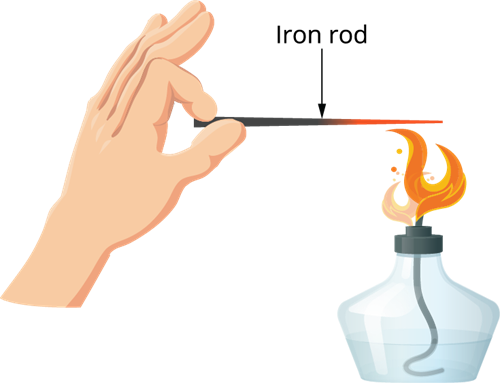
PUMPA - SMART LEARNING
எங்கள் ஆசிரியர்களுடன் 1-ஆன்-1 ஆலோசனை நேரத்தைப் பெறுங்கள். டாப்பர் ஆவதற்கு நாங்கள் பயிற்சி அளிப்போம்
Book Free DemoMolecules in solids are tightly packed and unable to move freely. When one end of a solid is heated, the molecules at that end absorb the heat energy and vibrate rapidly in their respective positions. These molecules collide with neighbouring molecules, causing them to vibrate faster and thus transferring energy. This process is repeated until all of the molecules have received heat energy.
Conduction:
The process of transfer of heat in solids from a region of higher temperature to a region of lower temperature without the actual movement of molecules is called conduction.

Conduction in daily life:
- Metals are excellent conductors of heat. So, aluminium is used for making utensils to cook food quickly.
- Mercury is used in thermometers because it is an excellent conductor of heat.
- We wear woollen clothes in the wintertime to keep ourselves warm. Air, which is a bad conductor, does not allow our body heat to escape.
Let us look at the following activity
- Take copper, aluminium, brass, and iron metal rods.
- Using melted wax, attach a matchstick to one end of each rod.
- Heat the other sides of the rod and observe what happens.
 Candle wax
Candle wax - The matches fall off when the temperature of the far ends reaches the melting point of wax.
- The matchstick on the copper rod falls first, demonstrating that copper is the best conductor, followed by aluminium, brass, and iron.
Reference:
https://www.piqsels.com/en/public-domain-photo-swvco/download